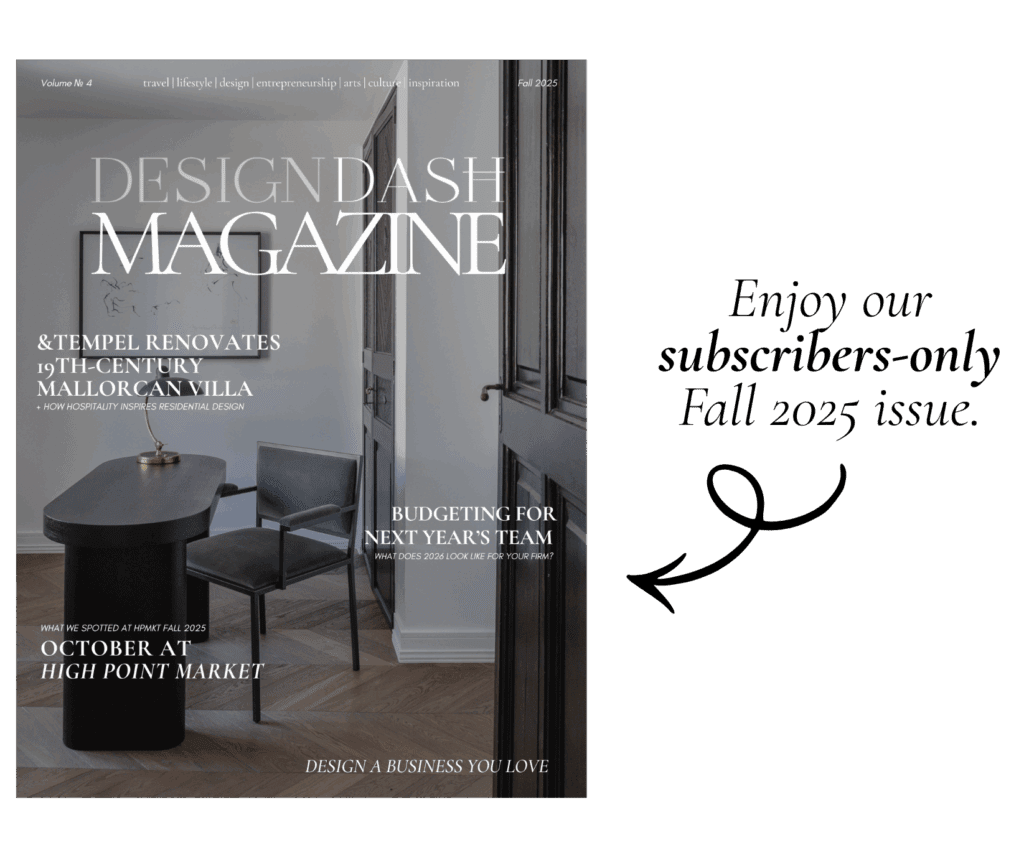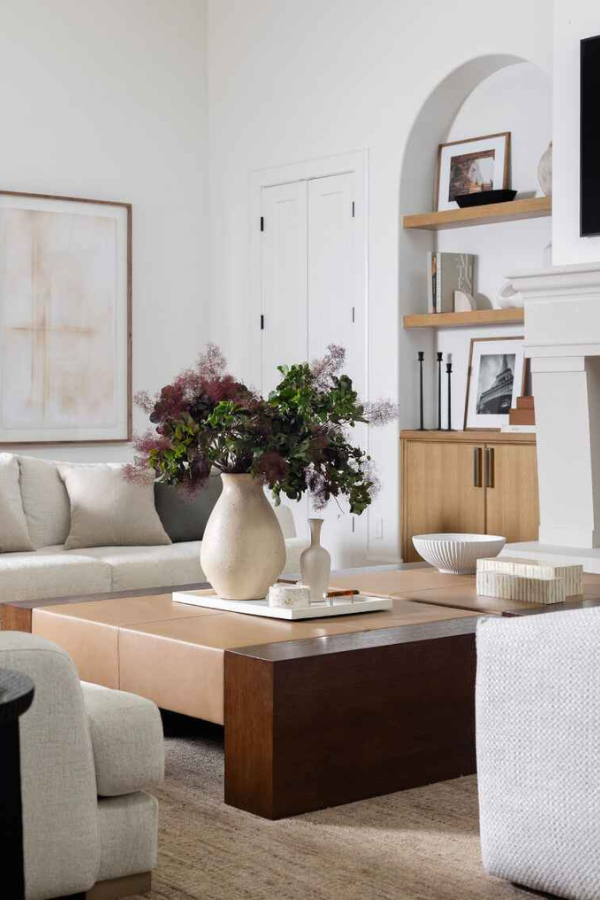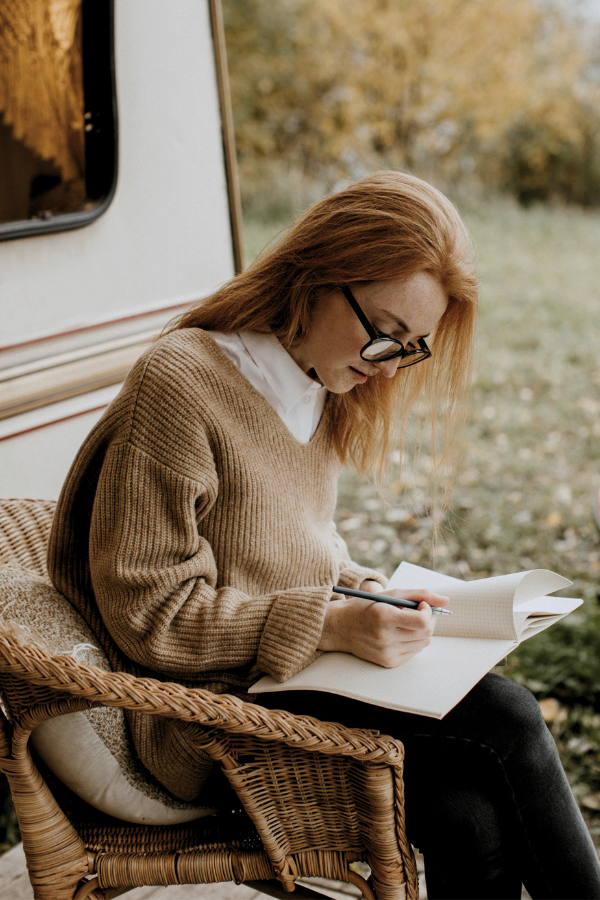
How to Design Romantic Interiors Without Falling Prey to Clichés
Summary
By treating romance as atmosphere instead of motif, designers can craft romantic interiors that feel intimate, sensual, and personal. Scale, materials, lighting, palettes, and sensory details all matter, but so does designing for ritual, not just relationships. The goal: interiors that invite connection, whether shared or solo, without leaning on roses and satin.
Reflection Questions
When a client asks for “romantic,” how do I move the conversation beyond color palettes and symbols to focus on mood and ritual?
Which materials, lighting strategies, or spatial gestures in my past projects already carried intimacy—whether or not they were labeled romantic?
How can I position myself as a designer who interprets romance through atmosphere and sensory layering rather than obvious motifs?
Journal Prompt
Think back to a space—your own or one you designed—that felt quietly romantic without trying to be. What made it work? Was it light, scale, texture, or something harder to name? How might you bring that same subtlety into a future project?
Your client wants a “romantic” interior. We all know how quickly spaces centered on tropes can go wrong. Roses on pillows, satin drapery, heart motifs… these are shortcuts and they age badly. Yet the desire for spaces that feel intimate, sensual, and layered with atmosphere is real and enduring. We get it! The question for designers is how to create environments that cultivate connection, whether shared with a partner or pursued in solitude, without tipping into parody. Don’t worry; we’ll tell you how!
Here’s How to Design Romantic Interiors Without Falling Prey to Clichés
Redefine Romance as Atmosphere

Romance isn’t a color palette or a motif. It’s a mood. That mood comes from rhythm, pacing, and sensory layering: the way light falls, the way materials invite touch, the way sound is absorbed or amplified. For some clients, it’s about creating a cocoon; for others, it’s about energy and allure. When you frame romance as an atmosphere rather than a symbol, the design possibilities are endless.
Shape Intimacy Through Scale

One of the most effective ways to build intimacy is by adjusting proportion. Oversized furniture can create drama, but smaller seating clusters, generous armchairs pulled close, or a dining banquette tucked into a corner naturally draw people together. Even in expansive rooms, breaking up space into intimate “moments” allows clients to choose closeness when they want it.
For single clients, these same gestures matter. A window seat designed for one feels as intentional as a lounge for two. In this context, romance is less about who occupies the space and more about the invitation the space extends.
Layer Sensuality Through Materials

Texture does more for romance than color ever could. Soft mohair, worn leather, plaster that begs for touch, silk that shifts under light… materials carry memory and intimacy. The key is restraint. Layer three or four textures, not twelve. Contrast the raw with the refined: velvet against stone, linen against metal.
For clients cultivating self-romance, these layers matter just as much. Running a hand across a hand-finished wood table while making morning coffee is as much an intimate act as a candlelit dinner for two.
Build Atmosphere With Lighting

Nothing destroys romance faster than flat, overhead light. Designers already know this, but it bears repeating: romance is cultivated in shadows. That doesn’t mean dark; it means dimension. Layer lighting from multiple sources: candlelight, sconces, concealed LED strips, dimmable lamps. Allow corners to fall away so the eye can rest.
In single-occupancy spaces, lighting can cue ritual. A dimmer in the bedroom isn’t only about establishing a romantic mood for two; it can also be about transitioning from the world’s pace to your own.
Expand Palettes Beyond Cliché

Romantic palettes don’t have to rely on red or pink. Think in tones that flatter skin and soften edges: muted blush, deep aubergine, earthy terracotta, stormy blue-gray. Pair them with neutrals that hold warmth rather than coolness. The effect is enveloping rather than saccharine.
Saturation also works as a tool. A monochrome scheme in a deep tone feels like immersion: think romance as totality, rather than as accent.
Engage Every Sense

Romantic interiors often succeed or fail in the sensory details designers can’t photograph. Acoustics matter: plush rugs, fabric wall treatments, or even strategic partitions keep a space from echoing. Scent is equally powerful: custom candles, essential oils integrated into HVAC, or a cedar-lined wardrobe. Even silence counts; you’re creating pockets of calm within busy households.
Fuel your creative fire & be a part of a supportive community that values how you love to live.
subscribe to our newsletter
*please check your Spam folder for the latest DesignDash Magazine issue immediately after subscription

For solo clients, these invisible details are the ultimate act of self-romance. A room that smells, sounds, and feels distinct from the outside world becomes an intimate cocoon.
Design for Ritual, Not Just Relationships

The language of romance in interiors doesn’t need to hinge on coupledom. Encourage clients to think about rituals that feel indulgent: morning coffee in a sunlit corner, a bath framed by candle niches, a music nook that feels enveloping. Designing for ritual elevates the everyday into something ceremonial, and it communicates romance as a lifestyle, not just a relationship dynamic.
Reframe the Designer’s Role

The risk with “romantic” is falling into stereotype. The opportunity is to redefine it as an atmosphere: intimate, sensory, attuned to detail. Whether for two or for one, the work is the same: create a stage where clients can feel connected, attentive, and a little transformed by their environment.
Join the DesignDash Community for More Insightful Tips Like These!
Still wrestling with how to translate mood into design language? Join the DesignDash Community! Here, designers trade not just resources but the behind-the-scenes questions, like how to create romance without resorting to clichés.
Written by the DesignDash Editorial Team
Our contributors include experienced designers, firm owners, design writers, and other industry professionals. If you’re interested in submitting your work or collaborating, please reach out to our Editor-in-Chief at editor@designdash.com.











